BLOG - Page 26
Recently created mixtures:

Sea-Buckthorn Macerated oil
February 7, 2019

Home made air freshener
June 29, 2016

Homemade Dog-rose distillate
June 28, 2016

Homemade jasmine distillate
June 22, 2016

Moxibustion treatment with Moxa stick
May 30, 2016

Face and body gentle oil cleanser
May 26, 2016
BLOG / LATEST ADDITIONS!
Grapefruit Essential Oil (Citrus x Paradisi) ☸ Essential oils ☸ Base / General
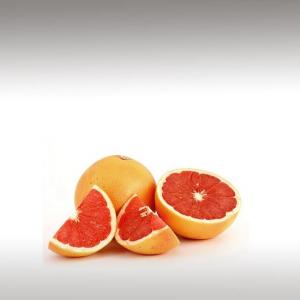

Botanical Name: Citrus x paradisi
Common Method of Extraction: Cold-pressed
Part Typically Used: Fresh peel
Color: Pale yellow or light ruby
Consistency: Thin
Perfumery Note: Top / Middle
Strength of Initial Aroma: Sharp refreshing smell
The Grapefruit (Citrus × Paradisi) is a subtropical citrus tree known for its sour to semi-sweet fruit, an 18th-century hybrid first bred in Barbados. When found, it was named the "Forbidden Fruit", and it has also been misidentified with the Pomelo or Shaddock (Citrus Maxima).
The evergreen Grapefruit trees usually grow to around 5 - 6 meters tall, although they can reach 13 - 15 m. The leaves are glossy dark green, long (up to 15 centimeters). The fruit is yellow - orange skinned and generally an oblate spheroid in shape, it ranges in diameter from 10–15 cm.
The flesh is segmented and acidic, varying in color depending on the cultivars, which include white, pink and red pulps of varying sweetness (generally, the redder varieties are sweeter).
One ancestor of the grapefruit was the Jamaican Sweet Orange (Citrus Sinensis), itself an ancient hybrid of Asian origin, the other was the Indonesian Pomelo (Citrus Maxima). One story of the fruit's origins is that a certain "Captain Shaddock" brought Pomelo seeds to Jamaica and bred the first fruit. However, it probably originated as a naturally occurring hybrid.
Originally from Asia, it is now cultivated in the USA, Brazil and Israel.
Like all Citrus oils, Grapefruit oil should be used within six month of purchase.
Chemical structure:
The principle constituents that yield the properties sought are limonene, which is the bulk. With the others being citral, cadinene, paradisola-pinene, sabinene, myrcene, geraniol, linalool, citronellal, decyl acetate, neryl acetate and terpinen-4-ol.
Common Method of Extraction: Cold-pressed
Part Typically Used: Fresh peel
Color: Pale yellow or light ruby
Consistency: Thin
Perfumery Note: Top / Middle
Strength of Initial Aroma: Sharp refreshing smell
The Grapefruit (Citrus × Paradisi) is a subtropical citrus tree known for its sour to semi-sweet fruit, an 18th-century hybrid first bred in Barbados. When found, it was named the "Forbidden Fruit", and it has also been misidentified with the Pomelo or Shaddock (Citrus Maxima).
The evergreen Grapefruit trees usually grow to around 5 - 6 meters tall, although they can reach 13 - 15 m. The leaves are glossy dark green, long (up to 15 centimeters). The fruit is yellow - orange skinned and generally an oblate spheroid in shape, it ranges in diameter from 10–15 cm.
The flesh is segmented and acidic, varying in color depending on the cultivars, which include white, pink and red pulps of varying sweetness (generally, the redder varieties are sweeter).
One ancestor of the grapefruit was the Jamaican Sweet Orange (Citrus Sinensis), itself an ancient hybrid of Asian origin, the other was the Indonesian Pomelo (Citrus Maxima). One story of the fruit's origins is that a certain "Captain Shaddock" brought Pomelo seeds to Jamaica and bred the first fruit. However, it probably originated as a naturally occurring hybrid.
Originally from Asia, it is now cultivated in the USA, Brazil and Israel.
Like all Citrus oils, Grapefruit oil should be used within six month of purchase.
Chemical structure:
The principle constituents that yield the properties sought are limonene, which is the bulk. With the others being citral, cadinene, paradisola-pinene, sabinene, myrcene, geraniol, linalool, citronellal, decyl acetate, neryl acetate and terpinen-4-ol.
Submitted by OperaDreamhouse (April 14, 2015)
Bay Laurel Essential Oil (Laurus Nobilis) ☸ Essential oils ☸ Base / General


Botanical Name: Laurus nobilis
Common Method of Extraction: Steam distillation
Part Typically Used: Leaves
Color: Clear
Consistency: Thin
Perfumery Note: Top
Strength of Initial Aroma: Medium - strong, herbacous, fruity, fresh, camphorous.
No tree has been as much praised for its elegance, fragrance and therapeutic properties as the Laurel.
Laurus nobilis is an aromatic evergreen tree or large shrub with green, glossy leaves, native to the Mediterranean region. It is known as Bay laurel, Sweet bay, Bay tree, True laurel, Grecian laurel,Laurel tree or Simply laurel.
Laurus is a genus of evergreen trees belonging to the Laurel family, Lauraceae. Laurus nobilis figures prominently in classical Greek, Roman, and Biblical culture.
The luxurious, evergreen leaves are alternate, with short stalks, lanceolate, 3 to 4 inches long, the margin smooth and wavy. They are thick, smooth, and of a shining, dark green colour. It grows well under the shade of other trees if they are not too close, and is useful in evergreen plantations.
The leaves are distilled to produce a greenish-yellow essential oil. It has an agreeable odour reminiscent of cajuputalthough the latter is softer and more acrid.
Lauris comes from the Latin word meaning "To praise", and Nobilis comes from the Latin word meaning "Renowned or famous".
Bay Laurel was used to fashion the laurel wreath of ancient Greece, a symbol of highest status. A wreath of Bay Laurels was given as the prize at the Pythian Games because the games were in honor of Apollo, and the Laurel was one of his symbols.
he Greek name of Laurel - Daphne - salutes the nymph who, on being pursued by Apollo, asked the other gods to help. They turned her into the Laurel tree which has, ever since, remained under the protection of all the gods in Olympus.
The symbolism carried over to Roman culture, which held the Laurel as a symbol of victory.
In the Bible, the Laurel is often an emblem of prosperity and fame. In Christian tradition, it symbolizes the resurrection of Christ.
Spiritually, in the Middle Ages the Laurel or Bay leaf tree was often planted in front of a house for protection, and to promote success.
Chemical structure:
The most abundant component found in Bay Laurel essential oil is 1,8-cineole, also called eucalyptol. The leaves contain about 1.3% essential oils, consisting of 45% eucalyptol, 12% other terpenes, 8-12%terpinyl acetate, 3–4% sesquiterpenes, 3% methyleugenol, and other α- and β-pinenes, phellandrene,linalool, geraniol, and terpineol.
Common Method of Extraction: Steam distillation
Part Typically Used: Leaves
Color: Clear
Consistency: Thin
Perfumery Note: Top
Strength of Initial Aroma: Medium - strong, herbacous, fruity, fresh, camphorous.
No tree has been as much praised for its elegance, fragrance and therapeutic properties as the Laurel.
Laurus nobilis is an aromatic evergreen tree or large shrub with green, glossy leaves, native to the Mediterranean region. It is known as Bay laurel, Sweet bay, Bay tree, True laurel, Grecian laurel,Laurel tree or Simply laurel.
Laurus is a genus of evergreen trees belonging to the Laurel family, Lauraceae. Laurus nobilis figures prominently in classical Greek, Roman, and Biblical culture.
The luxurious, evergreen leaves are alternate, with short stalks, lanceolate, 3 to 4 inches long, the margin smooth and wavy. They are thick, smooth, and of a shining, dark green colour. It grows well under the shade of other trees if they are not too close, and is useful in evergreen plantations.
The leaves are distilled to produce a greenish-yellow essential oil. It has an agreeable odour reminiscent of cajuputalthough the latter is softer and more acrid.
Lauris comes from the Latin word meaning "To praise", and Nobilis comes from the Latin word meaning "Renowned or famous".
Bay Laurel was used to fashion the laurel wreath of ancient Greece, a symbol of highest status. A wreath of Bay Laurels was given as the prize at the Pythian Games because the games were in honor of Apollo, and the Laurel was one of his symbols.
he Greek name of Laurel - Daphne - salutes the nymph who, on being pursued by Apollo, asked the other gods to help. They turned her into the Laurel tree which has, ever since, remained under the protection of all the gods in Olympus.
The symbolism carried over to Roman culture, which held the Laurel as a symbol of victory.
In the Bible, the Laurel is often an emblem of prosperity and fame. In Christian tradition, it symbolizes the resurrection of Christ.
Spiritually, in the Middle Ages the Laurel or Bay leaf tree was often planted in front of a house for protection, and to promote success.
Chemical structure:
The most abundant component found in Bay Laurel essential oil is 1,8-cineole, also called eucalyptol. The leaves contain about 1.3% essential oils, consisting of 45% eucalyptol, 12% other terpenes, 8-12%terpinyl acetate, 3–4% sesquiterpenes, 3% methyleugenol, and other α- and β-pinenes, phellandrene,linalool, geraniol, and terpineol.
Submitted by OperaDreamhouse (April 9, 2015)
Rosewood Essential Oil (Aniba Rosaeodora) ☸ Essential oils ☸ Base / General
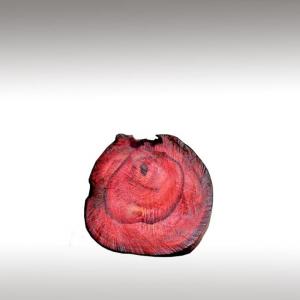

Botanical Name: Aniba rosaeodora
Common Method of Extraction: Steam Distilled
Part Typically Used: Wood
Color: Clear with a yellow tinge
Consistency: Thin
Perfumery Note: Middle
Strength of Initial Aroma: Sweet, woody, fruity, floral aroma.
Aniba Rosaeodora is a species of Magnoliid tree in the Lauraceae family. Its common names are Brazilian Rosewood and Rosewood tree. It grows in parts of the tropical rainforest of South America. It is an endangered species that sees exploitation for its essential oil.
Aniba Rosaeodora grows in the tropical rainforests of South America. It is found in the Brazilian states of Amapá, Amazonas, and Pará. It is also found in Colombia, Ecuador, Guyana, Peru, Suriname, Venezuela, and French Guiana, where it was formerly more widespread.
Rooswood tree is medium sized, tropical with a reddish bark and heartwood, bearing yellow flowers.
The Aniba Rosaeodora is known as Pau-Rosa in Brazil. The supply of this wood was greatly overused in the past and it now is as difficult to legally trade as elephant ivory.
Rosewood tree is massive, up to 30 meters in height and 2 meters in diameter, and evergreen.
The entire tree is fragrant. Substances in the tree include linalool and rubranine. The top note is sweet, camphoraceous-peppery. The body note is sweet-woody, floral-spicy. The dry - out is medium tenacity, light floral-woody.
The plant is one of the commercially important sources of Rosewood essential oil. The tree is collected in the wild. After felling, the trees are cut into one - meter long logs which are taken to the river bank and stockpiled there. When they arrive at the distillery, the logs are chipped and then steam distilled.
Each tree yields about 1% oil by weight of wood.
Chemical strucuture:
Rosewood oil is a valuable essential oil, especially in perfumery. It contains the substancelinalool, which has a number of uses.
Rosewood oil is rich in linalool, a chemical which can be transformed into a number of derivatives of value to the flavour and fragrance industries, and up until the 1960s Rosewood oil was an important source of natural linalool. With the advent of synthetic linalool this use largely disappeared.
Common Method of Extraction: Steam Distilled
Part Typically Used: Wood
Color: Clear with a yellow tinge
Consistency: Thin
Perfumery Note: Middle
Strength of Initial Aroma: Sweet, woody, fruity, floral aroma.
Aniba Rosaeodora is a species of Magnoliid tree in the Lauraceae family. Its common names are Brazilian Rosewood and Rosewood tree. It grows in parts of the tropical rainforest of South America. It is an endangered species that sees exploitation for its essential oil.
Aniba Rosaeodora grows in the tropical rainforests of South America. It is found in the Brazilian states of Amapá, Amazonas, and Pará. It is also found in Colombia, Ecuador, Guyana, Peru, Suriname, Venezuela, and French Guiana, where it was formerly more widespread.
Rooswood tree is medium sized, tropical with a reddish bark and heartwood, bearing yellow flowers.
The Aniba Rosaeodora is known as Pau-Rosa in Brazil. The supply of this wood was greatly overused in the past and it now is as difficult to legally trade as elephant ivory.
Rosewood tree is massive, up to 30 meters in height and 2 meters in diameter, and evergreen.
The entire tree is fragrant. Substances in the tree include linalool and rubranine. The top note is sweet, camphoraceous-peppery. The body note is sweet-woody, floral-spicy. The dry - out is medium tenacity, light floral-woody.
The plant is one of the commercially important sources of Rosewood essential oil. The tree is collected in the wild. After felling, the trees are cut into one - meter long logs which are taken to the river bank and stockpiled there. When they arrive at the distillery, the logs are chipped and then steam distilled.
Each tree yields about 1% oil by weight of wood.
Chemical strucuture:
Rosewood oil is a valuable essential oil, especially in perfumery. It contains the substancelinalool, which has a number of uses.
Rosewood oil is rich in linalool, a chemical which can be transformed into a number of derivatives of value to the flavour and fragrance industries, and up until the 1960s Rosewood oil was an important source of natural linalool. With the advent of synthetic linalool this use largely disappeared.
Submitted by OperaDreamhouse (April 9, 2015)
Clary Sage Essential Oil (Salvia Sclarea) ☸ Essential oils ☸ Base / General
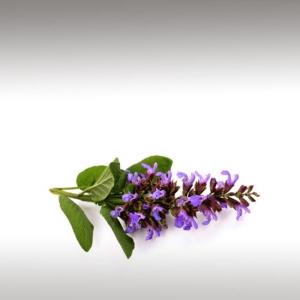

Botanical Name: Salvia sclarea
Common Method of Extraction: Steam Distilled
Part Typically Used: Leaves and Flowers/Buds
Color: Light Golden Yellow
Consistency: Thin to Medium
Perfumery Note: Middle
Strength of Initial Aroma: Bright, earthy, herbaceous, with a subtle fruity note, sweet, nutty scent, almost a floral quality.
Salvia comes from a Latin word "Salvere" meaning "To heal or save". Clary comes from a Latin word "Clarus" meaning "Clear".
The Romans called it Sclarea, from claurus, or “Clear,” because they used it as an eyewash. The practice of German merchants of adding clary and elder flowers to Rhine wine to make it imitate a good Muscatel was so common that Germans still call the herb Muskateller Salbei and the English know it as Muscatel Sage.
Salvia Sclarea, Clary, or Clary Sage, is a biennial or short-lived herbaceous perennial in the genus Salvia. It is native to the northern Mediterranean, along with some areas in north Africa and Central Asia.
The plant has a lengthy history as a medicinal herb, and is currently grown for its essential oil.
Salvia Sclarea reaches 0,91 to 1,22 m in height, with thick square stems that are covered in hairs.
The flowers are lilac or pale blue, pink or white, in whorls on top of the stems, with the upper lip curled up. The leaves are broad oval or heart - shaped, in pairs, 6-9 inches long, covered with fine silver - white hairs, almost stalkless. It blooms from June to July.
The flowers and leaves are collected at the end of blooming when the level of volatile oil in the plant is at its highest. The cutting and bundling usually takes place during the afternoon at which time the level of oil is at its daily peak unless it is too hot and sunny, raining or foggy. Heat evaporates the oil and excess humidity lowers the yield.
Any woody stalks are removed prior to charging the still since they contain virtually no oil, and because the yield is quite low via steam distillation (0.15% to 0.4%), it is processed quickly to avoid the loss of precious oil by evaporation.
Freshly distilled Clary Sage essential oil is colourless to pale olive with a tenacious warm, balsamic, sweet - herbaceous aroma that has characteristic nutty, woody and tobacco - like nuances.
Chemical structure:
The chief components of Clary Sage essential oil are Sclareol, Alpha Terpineol, Geraniol, Linalyl Acetate, Linalool, Caryophyllene, Neryl Acetate and Germacrene-D.
Common Method of Extraction: Steam Distilled
Part Typically Used: Leaves and Flowers/Buds
Color: Light Golden Yellow
Consistency: Thin to Medium
Perfumery Note: Middle
Strength of Initial Aroma: Bright, earthy, herbaceous, with a subtle fruity note, sweet, nutty scent, almost a floral quality.
Salvia comes from a Latin word "Salvere" meaning "To heal or save". Clary comes from a Latin word "Clarus" meaning "Clear".
The Romans called it Sclarea, from claurus, or “Clear,” because they used it as an eyewash. The practice of German merchants of adding clary and elder flowers to Rhine wine to make it imitate a good Muscatel was so common that Germans still call the herb Muskateller Salbei and the English know it as Muscatel Sage.
Salvia Sclarea, Clary, or Clary Sage, is a biennial or short-lived herbaceous perennial in the genus Salvia. It is native to the northern Mediterranean, along with some areas in north Africa and Central Asia.
The plant has a lengthy history as a medicinal herb, and is currently grown for its essential oil.
Salvia Sclarea reaches 0,91 to 1,22 m in height, with thick square stems that are covered in hairs.
The flowers are lilac or pale blue, pink or white, in whorls on top of the stems, with the upper lip curled up. The leaves are broad oval or heart - shaped, in pairs, 6-9 inches long, covered with fine silver - white hairs, almost stalkless. It blooms from June to July.
The flowers and leaves are collected at the end of blooming when the level of volatile oil in the plant is at its highest. The cutting and bundling usually takes place during the afternoon at which time the level of oil is at its daily peak unless it is too hot and sunny, raining or foggy. Heat evaporates the oil and excess humidity lowers the yield.
Any woody stalks are removed prior to charging the still since they contain virtually no oil, and because the yield is quite low via steam distillation (0.15% to 0.4%), it is processed quickly to avoid the loss of precious oil by evaporation.
Freshly distilled Clary Sage essential oil is colourless to pale olive with a tenacious warm, balsamic, sweet - herbaceous aroma that has characteristic nutty, woody and tobacco - like nuances.
Chemical structure:
The chief components of Clary Sage essential oil are Sclareol, Alpha Terpineol, Geraniol, Linalyl Acetate, Linalool, Caryophyllene, Neryl Acetate and Germacrene-D.
Submitted by OperaDreamhouse (April 9, 2015)
Water (H2O) ☸ Ingredients ☸ Base / General
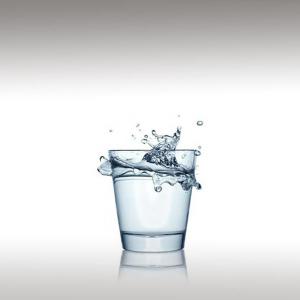
 Water in three states: liquid, solid (ice), and gas (invisible Water vapor in the air). It also exists as snow, fog, dew and cloud. Clouds are accumulations of Water droplets, condensed from vapor-saturated air.
Water in three states: liquid, solid (ice), and gas (invisible Water vapor in the air). It also exists as snow, fog, dew and cloud. Clouds are accumulations of Water droplets, condensed from vapor-saturated air. Water is a transparent fluid which forms the world's streams, lakes, oceans and rain, and is the major constituent of the fluids of living things. As a chemical compound, a water molecule contains one oxygen and two hydrogen atoms that are connected by covalent bonds.
Water covers some 70% of the Earth's surface. Approximately 97.2% of it is saline, just 2.8% fresh. The majority of Water on Earth is Sea Water.
The human body contains from 55% to 78% Water, depending on body size. To function properly, the body requires between one and seven liters of water per day to avoid dehydration. The precise amount depends on the level of activity, temperature, humidity, and other factors.
Water fit for human consumption is called Drinking Water or Potable Water. Water that is not potable may be made potable by filtration or distillation, or by a range of other methods.
Drinking Water (or Potable Water) is Water safe enough to be consumed by humans or used with low risk of immediate or long term harm. In most developed countries, the tap Water supplied to households, commerce and industry meets the Water quality potability standards, even though only a very small proportion is actually consumed or used in food preparation.
Water may require purification for human consumption. This may involve removal of undissolved substances, dissolved substances and harmful microbes. Popular methods are filtering with sand which only removes undissolved material, while chlorination and boiling kill harmful microbes. Distillation does all three functions. More advanced techniques exist, such as reverse osmosis. Desalination of abundant Sea Water is a more expensive solution used in coastal arid climates.
Water has been detected in interstellar clouds within our Galaxy, the Milky Way. Water probably exists in abundance in other Galaxies, too, because its components, hydrogen and oxygen, are among the most abundant elements in the universe.
Based on models of the formation and evolution of the Solar System and that of other Star Systems, most other planetary systems are likely to have similar ingredients.
Water is present as vapor in:
Atmosphere of the Sun - in detectable trace amounts
Atmosphere of Mercury - 3,4%, and large amounts of water in Mercury's exosphere
Atmosphere of Venus - 0,002%
Earth's atmosphere: ~0,40% over full atmosphere
Atmosphere of Mars - 0,03%
Atmosphere of Jupiter - 0,0004% - in ices only
Atmosphere of Saturn - in ices only
Atmosphere of Uranus - in trace amounts below 50 bar
Atmosphere of Neptune - found in the deeper layers.
Reduction of waterborne diseases and development of safe Water resources is a major public health goal in developing countries.
Chemical structure:
Water is the chemical substance with chemical formula H2O: one molecule of Water has two hydrogen atoms covalently bonded to a single oxygen atom.
Water is a good polar solvent and is often referred to as the universal solvent. Substances that dissolve in Water, salts, sugars, acids, alkalis, and some gases - especially oxygen and carbon dioxide (carbonation) – are known as hydrophilic (Water-loving) substances. All of the components in cells (proteins, DNA and polysaccharides) are dissolved in Water, deriving their structure and activity from their interactions with the Water.
Water boiling point is (set to 100 °C) and melting point is (set to 0 °C).
The boiling point of Water is dependent on the barometric pressure.
For example, on the top of Mount Everest water boils at 68 °C (154 °F), compared to 100 °C (212 °F) at sea level at a similar latitude. Conversely, water deep in the ocean near geothermal vents can reach temperatures of hundreds of degrees and remain liquid.
During Cooling Water becomes more dense until reaching 3.98 °C. Below this temperature, the open structure of ice is gradually formed in the low temperature Water. As Water is cooled there are two competing effects:
1) decreasing volume
2) increase overall volume of the liquid as the molecules begin to orient into the organized structure of ice.
Between 3.98 °C and 0 °C, the second effect will cancel the first effect so the net effect is an increase of volume with decreasing temperature.
Water is also central to acid-base neutrality and enzyme function. An acid, a hydrogen ion (H+, that is, a proton) donor, can be neutralized by a base, a proton acceptor such as a hydroxide ion (OH-) to form water.
Water is considered to be neutral, with a pH (the negative log of the hydrogen ion concentration) of 7. Acids have pH values less than 7 while bases have values greater than 7.
Submitted by OperaDreamhouse (April 8, 2015)
Cinnamon Stick (Cinnamomum Verum) ☸ Ingredients ☸ Base / General
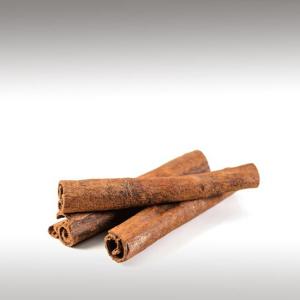

Cinnamon is a spice obtained from the inner bark of several trees from the genus Cinnamomum. Cinnamon is the name for perhaps a dozen species of trees and the commercialspice products that some of them produce. All are members of the genus Cinnamomum in the family Lauraceae. Only a few of them are grown commercially for spice.
True Cinnamon, the bark of Cinnamomum Verum (also called Cinnamomum Zeylanicum) from Sri Lanka.
Though its source was kept mysterious in the Mediterranean world for centuries by the middlemen who handled the spice trade, to protect their monopoly as suppliers, Cinnamon is native to Bangladesh, Sri Lanka, the Malabar Coast of India, and Burma.
Sri Lanka produces 80 - 90% of the world's supply of Cinnamomum Verum, but that is the only species grown there Cinnamomum. Verum is also cultivated on a commercial scale in Seychelles and Madagascar. India and Vietnam are also minor producers.
Cinnamon is cultivated by growing the tree for two years, then coppicing it, cutting the stems at ground level. The following year, about a dozen new shoots will from the roots, replacing those that were cut.
The stems must be processed immediately after harvesting while the inner bark is still wet. The cut stems are processed by scraping off the outer bark, then beating the branch evenly with a hammer to loosen the inner bark, which is then pried off in long rolls. Only 0,5 mm of the inner bark is used.
The processed bark will dry completely in four to six hours, provided it is in a well - ventilated and relatively warm environment. Once dry, thebark is cut into 5 - 10 cm lengths for sale. A less than ideal drying environment encourages the proliferation of pests in the bark, which may then require treatment by fumigation. Fumigated bark is not considered to be of the same premium quality as untreated bark.
Sri Lanka cinnamon has a very thin, smooth bark with a light-yellowish brown colour and a highly fragrant aroma. Any pieces of bark less than 106 mm long are categorized as quillings. Featherings are the inner barkof twigs and twisted shoots. Chips are trimmings of quills, outer and inner bark that cannot be separated, or thebark of small twigs.
Cinnamomum Verum is sometimes considered to be "True Cinnamon", most Cinnamon in international commerce is derived from related species, which are also referred to as "Cassia" to distinguish them from "True Cinnamon". The name of Cassia, first recorded in English around 1000 AD, was borrowed via Latin and ultimately derives from Hebrew, a form of the verb "Strip off Bark".
Cassia, the bark of Cinnamomum iners from Arabia and Ethiopia, literally "The Peel of the Plant" which is scraped off the tree.
The English word Cinnamon, attested in English since the 15th century, derives from the Greek Kinnámōmon, via Latin and medieval French intermediate forms. The Greek in turn was borrowed from a Phoenician word, which would have been akin to the related Hebrew Qinnamon.
Cinnamon has been known from remote antiquity. It was imported to Egypt as early as 2000 BC, but those who report it had come from China confuse it with Cassia. Cinnamon was so highly prized among ancient nations that it was regarded as a gift fit for monarchs and even for a god.
According to Pliny, a Roman pound of Cinnamon, or serichatum cost up to 300 denarii, the wage of ten months labour. Cinnamon was too expensive to be commonly used on funeral pyres in Rome, but the Emperor Nero is said to have burned a year's worth of the city's supply at the funeral for his wife Poppaea Sabina in AD 65.
The first Greek reference to Casia is found in a poem by Sappho in the seventh century BC. According to Herodotus, both Cinnamon and Cassia grew in Arabia, together with incense, Myrrh, and Ladanum, and were guarded by winged serpents. The Phoenix was reputed to build its nest from Cinnamon and Cassia. Herodotus mentions other writers who believed the source of Cassia was the home of Dionysos, located somewhere east or south of Greece.
True Cinnamon, the bark of Cinnamomum Verum (also called Cinnamomum Zeylanicum) from Sri Lanka.
Though its source was kept mysterious in the Mediterranean world for centuries by the middlemen who handled the spice trade, to protect their monopoly as suppliers, Cinnamon is native to Bangladesh, Sri Lanka, the Malabar Coast of India, and Burma.
Sri Lanka produces 80 - 90% of the world's supply of Cinnamomum Verum, but that is the only species grown there Cinnamomum. Verum is also cultivated on a commercial scale in Seychelles and Madagascar. India and Vietnam are also minor producers.
Cinnamon is cultivated by growing the tree for two years, then coppicing it, cutting the stems at ground level. The following year, about a dozen new shoots will from the roots, replacing those that were cut.
The stems must be processed immediately after harvesting while the inner bark is still wet. The cut stems are processed by scraping off the outer bark, then beating the branch evenly with a hammer to loosen the inner bark, which is then pried off in long rolls. Only 0,5 mm of the inner bark is used.
The processed bark will dry completely in four to six hours, provided it is in a well - ventilated and relatively warm environment. Once dry, thebark is cut into 5 - 10 cm lengths for sale. A less than ideal drying environment encourages the proliferation of pests in the bark, which may then require treatment by fumigation. Fumigated bark is not considered to be of the same premium quality as untreated bark.
Sri Lanka cinnamon has a very thin, smooth bark with a light-yellowish brown colour and a highly fragrant aroma. Any pieces of bark less than 106 mm long are categorized as quillings. Featherings are the inner barkof twigs and twisted shoots. Chips are trimmings of quills, outer and inner bark that cannot be separated, or thebark of small twigs.
Cinnamomum Verum is sometimes considered to be "True Cinnamon", most Cinnamon in international commerce is derived from related species, which are also referred to as "Cassia" to distinguish them from "True Cinnamon". The name of Cassia, first recorded in English around 1000 AD, was borrowed via Latin and ultimately derives from Hebrew, a form of the verb "Strip off Bark".
Cassia, the bark of Cinnamomum iners from Arabia and Ethiopia, literally "The Peel of the Plant" which is scraped off the tree.
The English word Cinnamon, attested in English since the 15th century, derives from the Greek Kinnámōmon, via Latin and medieval French intermediate forms. The Greek in turn was borrowed from a Phoenician word, which would have been akin to the related Hebrew Qinnamon.
Cinnamon has been known from remote antiquity. It was imported to Egypt as early as 2000 BC, but those who report it had come from China confuse it with Cassia. Cinnamon was so highly prized among ancient nations that it was regarded as a gift fit for monarchs and even for a god.
According to Pliny, a Roman pound of Cinnamon, or serichatum cost up to 300 denarii, the wage of ten months labour. Cinnamon was too expensive to be commonly used on funeral pyres in Rome, but the Emperor Nero is said to have burned a year's worth of the city's supply at the funeral for his wife Poppaea Sabina in AD 65.
The first Greek reference to Casia is found in a poem by Sappho in the seventh century BC. According to Herodotus, both Cinnamon and Cassia grew in Arabia, together with incense, Myrrh, and Ladanum, and were guarded by winged serpents. The Phoenix was reputed to build its nest from Cinnamon and Cassia. Herodotus mentions other writers who believed the source of Cassia was the home of Dionysos, located somewhere east or south of Greece.
Chemical structure:
Sweet Cinnamon can contain up to 4% oil of cinnamaldehyde, eugenol, and trans-cinnamic acid, however it is usually lighter in oil content and sweeter tasting than Cassia Cinnamon.
It also contains phenolic compounds, tannins, catechins, calcium, iron, mucilage, resin, natural sugars, and traces of coumarin.
Submitted by OperaDreamhouse (April 8, 2015)
Water (H2O) ☸ Ingredients ☸ Food / Cooking


Some health authorities have suggested at least eight glasses (240 ml), of Water are required by an adult per day (189 ml). The British Dietetic Association recommends 1,8 litres.
Pure H2O is tasteless and odorless. Water can dissolve many different substances, giving it varying tastes and odors. Humans, and other animals, have developed senses that enable them to evaluate the potability of Water by avoiding Water that is too salty or putrid.
Boiling, steaming, and simmering are popular cooking methods that often require immersing food in Water or its gaseous state, steam. Water also plays many critical roles within the field of food science. It is important for a food scientist to understand the roles that Water plays within food processing to ensure the success of their products.
Pure H2O is tasteless and odorless. Water can dissolve many different substances, giving it varying tastes and odors. Humans, and other animals, have developed senses that enable them to evaluate the potability of Water by avoiding Water that is too salty or putrid.
Boiling, steaming, and simmering are popular cooking methods that often require immersing food in Water or its gaseous state, steam. Water also plays many critical roles within the field of food science. It is important for a food scientist to understand the roles that Water plays within food processing to ensure the success of their products.
Submitted by OperaDreamhouse (April 8, 2015)
Water (H2O) ☸ Ingredients ☸ Medicine / Health


Fluid balance is key. Profuse sweating can increase the need for electrolyte (Salt) replacement.
Fluid losses occur continuously, from skin evaporation, breathing, urine, and stool, and these losses must be replaced daily for good health.
Safe Drinking Water is essential to humans and other lifeforms even though it provides nocalories or organic nutrients.
The Drinking Water contribution to mineral nutrients intake is also unclear. Inorganic minerals generally enter surface Water and ground Water via Storm Water Runoff or through the Earth's crust. Treatment processes also lead to the presence of someminerals. Examples include calcium, zinc, manganese, phosphate, fluoride and sodium compounds.
There are a variety of trace elements present in virtually all Potable Water, some of which play a role in metabolism. For example sodium, potassium and chloride are common chemicals found in small quantities in most Waters, and these elements play a role in body metabolism. Other elements such as fluoride, while beneficial in low concentrations, can cause dental problems and other issues when present at high levels.
All known forms of life depend on Water. Water is vital both as a solvent in which many of the body's solutes dissolve and as an essential part of many metabolic processes within the body. Metabolism is the sum total of anabolism and catabolism.
In anabolism, Water is removed from molecules (through energy requiring enzymatic chemical reactions) in order to grow larger molecules (starches, triglycerides and proteins for storage of fuels and information).
In catabolism, Water is used to break bonds in order to generate smaller molecules (glucose, fatty acids and amino acids to be used for fuels for energy use or other purposes). Without Water, these particular metabolic processes could not exist.
Water is fundamental to photosynthesis and respiration. Photosynthetic cells use the sun's energy to split off Water's hydrogen from oxygen. Hydrogen is combined with CO2 (absorbed from air or Water) to form glucose and release oxygen.
Fluid losses occur continuously, from skin evaporation, breathing, urine, and stool, and these losses must be replaced daily for good health.
Safe Drinking Water is essential to humans and other lifeforms even though it provides nocalories or organic nutrients.
The Drinking Water contribution to mineral nutrients intake is also unclear. Inorganic minerals generally enter surface Water and ground Water via Storm Water Runoff or through the Earth's crust. Treatment processes also lead to the presence of someminerals. Examples include calcium, zinc, manganese, phosphate, fluoride and sodium compounds.
There are a variety of trace elements present in virtually all Potable Water, some of which play a role in metabolism. For example sodium, potassium and chloride are common chemicals found in small quantities in most Waters, and these elements play a role in body metabolism. Other elements such as fluoride, while beneficial in low concentrations, can cause dental problems and other issues when present at high levels.
All known forms of life depend on Water. Water is vital both as a solvent in which many of the body's solutes dissolve and as an essential part of many metabolic processes within the body. Metabolism is the sum total of anabolism and catabolism.
In anabolism, Water is removed from molecules (through energy requiring enzymatic chemical reactions) in order to grow larger molecules (starches, triglycerides and proteins for storage of fuels and information).
In catabolism, Water is used to break bonds in order to generate smaller molecules (glucose, fatty acids and amino acids to be used for fuels for energy use or other purposes). Without Water, these particular metabolic processes could not exist.
Water is fundamental to photosynthesis and respiration. Photosynthetic cells use the sun's energy to split off Water's hydrogen from oxygen. Hydrogen is combined with CO2 (absorbed from air or Water) to form glucose and release oxygen.
All living cells use such fuels and oxidize the hydrogen and carbon to capture the sun's energy and reform water and CO2 in the process (Cellular respiration).
Drinking Water helps maintain the balance of body fluids. The functions of these bodily fluids include digestion, absorption, circulation, creation of saliva, transportation of nutrients, and maintenance of body temperature.
Through the posterior pituitary gland, human brain communicates withkidneys and tells it how much Water to excrete as urine or hold onto for reserves.
Water helps humankidneys. Body fluids transport waste products in and out of cells. The main toxin in the body is blood urea nitrogen, a Water-soluble waste that is able to pass through thekidneys to be excreted in the urine.
Drinking Water helps maintain the balance of body fluids. The functions of these bodily fluids include digestion, absorption, circulation, creation of saliva, transportation of nutrients, and maintenance of body temperature.
Through the posterior pituitary gland, human brain communicates withkidneys and tells it how much Water to excrete as urine or hold onto for reserves.
Water helps humankidneys. Body fluids transport waste products in and out of cells. The main toxin in the body is blood urea nitrogen, a Water-soluble waste that is able to pass through thekidneys to be excreted in the urine.
When human getting enough fluids,urine flows freely, is light in color and free of odor. When your body is not getting enough fluids, urine concentration, color, and odor increases because thekidneys trap extra fluid for bodily functions.
Water can help controlcalories. For years, dieters have been drinking lots of Water as a weight loss strategy. While Water doesn't have any magical effect on weight loss, substituting it for higher calorie beverages can certainly help.
Water helps energize muscles. Cells that don't maintain their balance of fluids and electrolytes shrivel, which can result in muscle fatigue. When muscle cells don't have adequate fluids, they don't work as well and performance can suffer.
Water helps maintain normal bowel function. Adequate hydration keeps things flowing along gastrointestinal tract and prevents constipation.
Water can help controlcalories. For years, dieters have been drinking lots of Water as a weight loss strategy. While Water doesn't have any magical effect on weight loss, substituting it for higher calorie beverages can certainly help.
Water helps energize muscles. Cells that don't maintain their balance of fluids and electrolytes shrivel, which can result in muscle fatigue. When muscle cells don't have adequate fluids, they don't work as well and performance can suffer.
Water helps maintain normal bowel function. Adequate hydration keeps things flowing along gastrointestinal tract and prevents constipation.
Submitted by OperaDreamhouse (April 8, 2015)
Water (H2O) ☸ Ingredients ☸ Beauty / Cosmetics


Water helps keep skin looking good. Human skin contains plenty of Water, and functions as a protective barrier to prevent excess fluid loss. Dehydration makes body and face skin look more dry and wrinkled, which can be improved with proper hydration.
Submitted by OperaDreamhouse (April 8, 2015)
Water (H2O) ☸ Ingredients ☸ Spiritual Practises


Water is considered a purifier in most religions. Faiths that incorporate ritual washing (ablution) include Christianity, Hinduism, Islam, Judaism, the Rastafari movement, Shinto, Taoism, and Wicca.
Immersion (or aspersion or affusion) of a person in Water is a central sacrament of Christianity (where it is called baptism).
In addition, a ritual bath inpure Water is performed for the dead in manyreligions including Islam and Judaism. In Islam, the five daily prayers can be done in most cases after completing washing certain parts of the body using clean Water.
Immersion (or aspersion or affusion) of a person in Water is a central sacrament of Christianity (where it is called baptism).
In addition, a ritual bath inpure Water is performed for the dead in manyreligions including Islam and Judaism. In Islam, the five daily prayers can be done in most cases after completing washing certain parts of the body using clean Water.
In Shinto, water is used in almost all rituals to cleanse a person or an area.
The Ancient Greek philosopher Empedocles held that water is one of the four classical elements along with fire, earth and air, and was regarded as the ylem, or basic substance of the universe. Thales, who was portrayed by Aristotle as an astronomer and an engineer, theorized that the earth, which is denser than water, emerged from water.
"There is nothing in the world more soft and weak than water, and yet for attacking things that are firm and strong there is nothing that can take precedence of it - for there is nothing (so effectual) for which it can be changed."
Guanzi in "Shui di".
Submitted by OperaDreamhouse (April 8, 2015)
Cinnamon Stick (Cinnamomum Verum) ☸ Ingredients ☸ Food / Cooking


Thebarks, when whole, are easily distinguished, and their microscopic characteristics are also quite distinct. Ceylon Cinnamon Sticks have many thin layers and can easily be made into powder using a coffee or spice grinder, whereas Cassia Sticks are much harder.
Cinnamon powder has long been an important spice in enhancing the flavor of Persian cuisine, used in a variety of thick soups, drinks, and sweets.
Cinnamon bark is widely used as aspice. It is principally employed in cookery as a condiment and flavouring material. It is used in the preparation of chocolate, especially in Mexico, which is the main importer of Cinnamon. It is also used in many dessert recipes, such asapple pie, doughnuts, and Cinnamon buns as well as spicy candies, coffee, tea, hot Cocoa.
In the Middle East, Cinnamon is often used in savoury dishes ofchicken and lamb.
It is also used in Turkish cuisine for both sweet and savoury dishes.
Besides use as flavourant and spice in foods, Cinnamon flavoured tea, also flavoured with Cardamom, is consumed as a hot beverage in Bangladesh, India and Pakistan.
The Greeks used Casia or malabathron to flavour wine, together with absinth Wormwood (Artemisia Absinthium).
During the middle ages it was used as a meat preservative due to its anti-bacterial and anti-fungal qualities, but also so that it could mask the stench of “aged” meats much better than Salt.
Cinnamon is effective in inhibiting bacterial growth. This maybe one reason why it is widely used in food preparation in hot Asian countries. In Sri Lanka, virtually every dish has a pinch of Cinnamon in it. In addition to great flavor, Cinnamon in combination with other spices like Turmeric and Chili may have been an indigenous solution to preserve food without a refrigerator.
Cinnamon powder has long been an important spice in enhancing the flavor of Persian cuisine, used in a variety of thick soups, drinks, and sweets.
Cinnamon bark is widely used as aspice. It is principally employed in cookery as a condiment and flavouring material. It is used in the preparation of chocolate, especially in Mexico, which is the main importer of Cinnamon. It is also used in many dessert recipes, such asapple pie, doughnuts, and Cinnamon buns as well as spicy candies, coffee, tea, hot Cocoa.
In the Middle East, Cinnamon is often used in savoury dishes ofchicken and lamb.
It is also used in Turkish cuisine for both sweet and savoury dishes.
Besides use as flavourant and spice in foods, Cinnamon flavoured tea, also flavoured with Cardamom, is consumed as a hot beverage in Bangladesh, India and Pakistan.
The Greeks used Casia or malabathron to flavour wine, together with absinth Wormwood (Artemisia Absinthium).
During the middle ages it was used as a meat preservative due to its anti-bacterial and anti-fungal qualities, but also so that it could mask the stench of “aged” meats much better than Salt.
Cinnamon is effective in inhibiting bacterial growth. This maybe one reason why it is widely used in food preparation in hot Asian countries. In Sri Lanka, virtually every dish has a pinch of Cinnamon in it. In addition to great flavor, Cinnamon in combination with other spices like Turmeric and Chili may have been an indigenous solution to preserve food without a refrigerator.
Submitted by OperaDreamhouse (April 8, 2015)
Cinnamon Stick (Cinnamomum Verum) ☸ Ingredients ☸ Medicine / Health


Cinnamon has a long history of use in traditional medicine. Ancient folklore says the smell of Cinnamon is the best cure for the winter blues.
Cinnamon can be the solution for blood sugar control, weight loss, alertness, creating natural disinfectants, cancer prevention.
Several studies have found that Cinnamon has properties that help those withinsulin resistance. It is therefore very popular withType IIdiabetics who take it to control theirblood sugar variations.
Cinnamon can be the solution for blood sugar control, weight loss, alertness, creating natural disinfectants, cancer prevention.
Several studies have found that Cinnamon has properties that help those withinsulin resistance. It is therefore very popular withType IIdiabetics who take it to control theirblood sugar variations.
Cinnamon has a 3 - 5% effect onblood sugar levels, similar to an older generation of diabetes drugs. That could make it an ideal option for pre diabetics.
Cinnamon is a powerfulanti-bacterial. Research has shown Cinnamon is one of the most effective substances against escherichia coli, salmonella, campylobacter.
Research shows that Cinnamon oil is a promising solution in the treatment of tumors, gastric cancersand melanomas. Research studies show that sugar maybe causing or sustaining cancer cells and Cinnamon may have a mitigating effect by controllingblood sugar levels in the body.
Another study found good results with leukemia and lymphoma cancer cells. Cinnamon in its various forms has two chemical constituents called cinnamaldehyde and eugenol (From Cinnamon oil). These have been used to develop nutraceuticals in this study that have proven fairly effective in fighting human coloncancer cells (Eugenol) and human hepatoma cells (Cinnamaldehyde).
Most of the evidence that Cinnamon helpsarthritis is from personal testimonials. Some people claim drinking Cinnamon tea helps the pain from arthritiswhile others claim a Cinnamon oil based massage oil helps ease the pain.
Cinnamon has high levels ( in two sticks of Cinnamon) ofmanganese which is used tobuild bones,blood and other connective tissues. The body needs manganese for optimal bone health, so people who are deficient in the mineral are more likely to develop osteoporosis.
German study cited in this article those taking cinnamon improved their response times and memory recall. While not scientific, our personal experience suggests pretty good results in alertness and concentration.
Cinnamon is one of the top seven anti-oxidants in the world. The suggestion is thatanti-oxidants reduce the formation of "free radicals" that cause cancer. This study found Cinnamon has sufficient anti-oxidant properties and makes for improved food palatability.
Cinnamon's powerful anti fungal properties are the perfect natural alternative to killing the athletes foot fungus. You can use Cinnamon Sticks or even better a few drops of powerful Ceylon Cinnamon Leaf oil.
Cinnamonum is one of the most effective E-coli fighters because of its antimicrobial properties.The anti-bacterial properties of Cinnamon play a crucial role in getting rid of harmful bacteria without damaging yourteeth or gums. It's one of the reasons that cinnamon oil is often used in chewing gums,mouthwashes, toothpaste and breath mints.
One teaspoon of Cinnamon Powder has 0,33mg (16% DV) Manganese, 0,76 mg (4% DV) Iron, 24,56 mg (2% DV) Calcium. Manganese apparently works as an enzyme activator and plays an important role in building good structure andbone metabolism.
Because of the high levels of manganese Cinnamon may be an excellent candidate to mitigate the effects ofPMS. These results suggest that a manganese rich diet may helpreduce symptoms of PMS. Another clinical study found that 46 patients withPMS had significantly lower amounts of calcium, chromium, copper, and manganese in their blood. You should not consume more than 11 mg of Manganese per day (about 12 Cinnamon Sticks) according NYU.
How much cinnamon should you take?
Because Cinnamon is an unproven treatment, there is no established dose. Some recommend 1/2 to 1 teaspoon (2 - 4 grams) of powder a day. Some studies have used between 1 gram and 6 grams of Cinnamon. Very high doses may be toxic.
Side effects:
Heavy use of Cinnamon may irritate the mouth and lips, causing sores. In some people, it can cause anallergic reaction. Applied to the skin, it might cause redness and irritation.
Very high quantities of Cinnamon may be toxic, particularly in people withliver problems. Because Cinnamon may lower blood sugar, people with diabetes may need to adjust their treatment if they use Cinnamon supplements.
An ingredient in some Cinnamon products, coumarin, maycause liver problems. Given the lack of evidence about its safety, Cinnamon as a treatment is not recommended for children or for women who are pregnant or breastfeeding.
Cinnamon is a powerfulanti-bacterial. Research has shown Cinnamon is one of the most effective substances against escherichia coli, salmonella, campylobacter.
Research shows that Cinnamon oil is a promising solution in the treatment of tumors, gastric cancersand melanomas. Research studies show that sugar maybe causing or sustaining cancer cells and Cinnamon may have a mitigating effect by controllingblood sugar levels in the body.
Another study found good results with leukemia and lymphoma cancer cells. Cinnamon in its various forms has two chemical constituents called cinnamaldehyde and eugenol (From Cinnamon oil). These have been used to develop nutraceuticals in this study that have proven fairly effective in fighting human coloncancer cells (Eugenol) and human hepatoma cells (Cinnamaldehyde).
Most of the evidence that Cinnamon helpsarthritis is from personal testimonials. Some people claim drinking Cinnamon tea helps the pain from arthritiswhile others claim a Cinnamon oil based massage oil helps ease the pain.
Cinnamon has high levels ( in two sticks of Cinnamon) ofmanganese which is used tobuild bones,blood and other connective tissues. The body needs manganese for optimal bone health, so people who are deficient in the mineral are more likely to develop osteoporosis.
German study cited in this article those taking cinnamon improved their response times and memory recall. While not scientific, our personal experience suggests pretty good results in alertness and concentration.
Cinnamon is one of the top seven anti-oxidants in the world. The suggestion is thatanti-oxidants reduce the formation of "free radicals" that cause cancer. This study found Cinnamon has sufficient anti-oxidant properties and makes for improved food palatability.
Cinnamon's powerful anti fungal properties are the perfect natural alternative to killing the athletes foot fungus. You can use Cinnamon Sticks or even better a few drops of powerful Ceylon Cinnamon Leaf oil.
Cinnamonum is one of the most effective E-coli fighters because of its antimicrobial properties.The anti-bacterial properties of Cinnamon play a crucial role in getting rid of harmful bacteria without damaging yourteeth or gums. It's one of the reasons that cinnamon oil is often used in chewing gums,mouthwashes, toothpaste and breath mints.
One teaspoon of Cinnamon Powder has 0,33mg (16% DV) Manganese, 0,76 mg (4% DV) Iron, 24,56 mg (2% DV) Calcium. Manganese apparently works as an enzyme activator and plays an important role in building good structure andbone metabolism.
Because of the high levels of manganese Cinnamon may be an excellent candidate to mitigate the effects ofPMS. These results suggest that a manganese rich diet may helpreduce symptoms of PMS. Another clinical study found that 46 patients withPMS had significantly lower amounts of calcium, chromium, copper, and manganese in their blood. You should not consume more than 11 mg of Manganese per day (about 12 Cinnamon Sticks) according NYU.
How much cinnamon should you take?
Because Cinnamon is an unproven treatment, there is no established dose. Some recommend 1/2 to 1 teaspoon (2 - 4 grams) of powder a day. Some studies have used between 1 gram and 6 grams of Cinnamon. Very high doses may be toxic.
Side effects:
Heavy use of Cinnamon may irritate the mouth and lips, causing sores. In some people, it can cause anallergic reaction. Applied to the skin, it might cause redness and irritation.
Very high quantities of Cinnamon may be toxic, particularly in people withliver problems. Because Cinnamon may lower blood sugar, people with diabetes may need to adjust their treatment if they use Cinnamon supplements.
An ingredient in some Cinnamon products, coumarin, maycause liver problems. Given the lack of evidence about its safety, Cinnamon as a treatment is not recommended for children or for women who are pregnant or breastfeeding.
Submitted by OperaDreamhouse (April 8, 2015)
Cinnamon Stick (Cinnamomum Verum) ☸ Ingredients ☸ Spiritual Practises

 Egyptian recipes for kyphi, an aromatic used for burning, included cinnamon and cassia from Hellenistic times onward. The gifts of Hellenistic rulers to temples sometimes included cassia and cinnamon as well as incense, myrrh, and Indian incense (kostos), so one might conclude that the Greeks used it for similar purposes.
Egyptian recipes for kyphi, an aromatic used for burning, included cinnamon and cassia from Hellenistic times onward. The gifts of Hellenistic rulers to temples sometimes included cassia and cinnamon as well as incense, myrrh, and Indian incense (kostos), so one might conclude that the Greeks used it for similar purposes.Cassia was also part of the ketoret, the consecrated incense described in the Hebrew Bible and Talmud. It was offered on the specialized incense altar in the time when the Tabernacle was located in the First and Second Jerusalem temples. The ketoret was an important component of the temple service in Jerusalem.
Submitted by OperaDreamhouse (April 8, 2015)
Turmeric Root Powder (Curcuma Longa) ☸ Ingredients ☸ Base / General
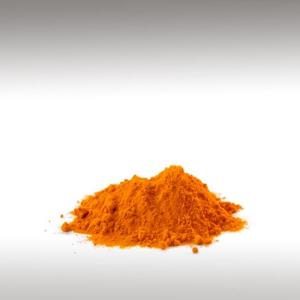

Turmeric (Curcuma Longa) is a rhizomatous herbaceous perennial plant of the Ginger family, Zingiberaceae. It is native in southwest India, and needs temperatures between 20 and 30°C and a considerable amount of annual rainfall to thrive.
Turmeric is a perennial herbaceous plant, which reaches up to 1 m tall. Highly branched, yellow to orange, cylindrical, aromatic rhizomes are found.
Not used fresh, the rhizomes are boiled for about 30 - 45 minutes and then dried in hot ovens, after which they are ground into a deep-orange-yellow powder commonly used as a spice.
The name of the genus, Curcuma is from an Arabic name of both Saffron and Turmeric (see Crocus). The name appears to derive from Middle English/early modern English. There may be Latin origin, Terra Merita (Merited Earth).
Turmeric is considered auspicious and holy in India and has been used in various Hindu ceremonies for Millennia. It remains popular in India for wedding and religious ceremonies.
The Turmeric paste is applied by friends to the bodies of the couple. This is said to soften the skin, but also colors them with the distinctive yellow hue that gives its name to wedding ceremony.
Turmeric has played an important role in Hindu spiritualism.
Turmeric is a perennial herbaceous plant, which reaches up to 1 m tall. Highly branched, yellow to orange, cylindrical, aromatic rhizomes are found.
Not used fresh, the rhizomes are boiled for about 30 - 45 minutes and then dried in hot ovens, after which they are ground into a deep-orange-yellow powder commonly used as a spice.
The name of the genus, Curcuma is from an Arabic name of both Saffron and Turmeric (see Crocus). The name appears to derive from Middle English/early modern English. There may be Latin origin, Terra Merita (Merited Earth).
Turmeric is considered auspicious and holy in India and has been used in various Hindu ceremonies for Millennia. It remains popular in India for wedding and religious ceremonies.
The Turmeric paste is applied by friends to the bodies of the couple. This is said to soften the skin, but also colors them with the distinctive yellow hue that gives its name to wedding ceremony.
Turmeric has played an important role in Hindu spiritualism.
The robes of the Hindu monks were traditionally colored with a yellow dye made of Turmeric. Because of its yellow-orange coloring, Turmeric was associated with the sun or the Thirumal in the mythology of ancient Tamil religion.
Yellow is the color of the Solar Plexus Chakra which in traditional Tamil Siddha medicine is an energy center. Orange is the color of the Sacral Chakra.
Chemical structure:
One active ingredient is Curcumin, which has a distinctly earthy, slightly bitter, slightly hot peppery flavor and a mustardy smell.
The most important chemical components of Turmeric are a group of compounds called Curcuminoids, which include Curcumin (diferuloylmethane), Demethoxycurcumin, and Bisdemethoxycurcumin.
Chemical structure:
One active ingredient is Curcumin, which has a distinctly earthy, slightly bitter, slightly hot peppery flavor and a mustardy smell.
The most important chemical components of Turmeric are a group of compounds called Curcuminoids, which include Curcumin (diferuloylmethane), Demethoxycurcumin, and Bisdemethoxycurcumin.
The best-studied compound is Curcumin, which constitutes 3.14% (on average) of powdered Turmeric.
In addition, other important volatile oils include Turmerone, Atlantone, and Zingiberene.
Some general constituents are Sugars, Proteins, and Resins.
Submitted by OperaDreamhouse (March 30, 2015)
Black Pepper Powder (Piper Nigrum) ☸ Ingredients ☸ Base / General
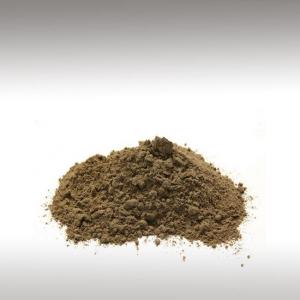

Black Pepper (Piper Nigrum) is a flowering vine in the family Piperaceae, cultivated for its fruit, which is usually dried and used as a spice and seasoning.
The Pepper plant is a perennial woody vine growing up to 4 metres in height on supporting trees, poles, or trellises. It is a spreading vine, rooting readily where trailing stems touch the ground.
The leaves are alternate, entire, 5 - 10 cm long and 3 - 6 cm across. The flowers are small, produced on pendulous spikes 4 - 8 cm long at the leaf nodes, the spikes lengthening up to 7 - 15 cm as the fruit matures.
The fruit, known as a Peppercorn when dried, is approximately 5 millimetres in diameter, dark red when fully mature, and, like all drupes, contains a single seed.
Peppercorns, and the ground Pepper derived from them, may be described simply as Pepper, or more precisely as Black Pepper (cooked and dried unripe fruit), Green Pepper (dried unripe fruit) and white Pepper (ripe fruit seeds).
Black Pepper is produced from the still-green unripe drupes of the Pepper plant. The drupes are cooked briefly in hot water, both to clean them and to prepare them for drying. The heat ruptures cell walls in the Pepper, speeding the work of browning enzymes during drying.
The drupes are dried in the sun or by machine for several days, during which the Pepper around the seed shrinks and darkens into a thin, wrinkled black layer.
Once dried, the spice is called Black Peppercorn. On some estates, the berries are separated from the stem by hand and then sun-dried without the boiling process.
Black Pepper is native to south India, and is extensively cultivated there and elsewhere in tropical regions. Currently Vietnam is the world's largest producer and exporter of pepper, producing 34% of the world's Piper Nigrum.
Black Pepper is the world's most traded spice.
The word "Pepper" has its roots in the Dravidian word for Long Pepper, Pippali. Ancient Greek and Latin turned Pippali into the Latin Piper, which was used by the Romans to refer both to Black Pepper and Long Pepper, as the Romans erroneously believed that both of these spices were derived from the same plant.
Black Peppercorns were found stuffed in the nostrils of Ramesses II, placed there as part of the mummification rituals shortly after his death in 1213 BCE. Little else is known about the use of Pepper in ancient Egypt and how it reached the Nile from South Asia.
Pepper (both long and black) was known in Greece at least as early as the 4th century BCE, though it was probably an uncommon and expensive item that only the very rich could afford.
Chemical structutre:
The spiciness of Black Pepper is due to the chemical Piperine, not to be confused with the capsaicin that gives fleshy Peppers theirs.
One tablespoon (6 grams) of ground Black Pepper contains moderate amounts of Vitamin K (13% of the Daily Value or DV), iron (10% DV) and Manganese (18% DV), with trace amounts of other essential nutrients, protein and dietary fibre.
Pepper loses flavour and aroma through evaporation, so airtight storage helps preserve its spiciness longer. Pepper can also lose flavour when exposed to light, which can transform Piperine into nearly tasteless isochavicine.
The Pepper plant is a perennial woody vine growing up to 4 metres in height on supporting trees, poles, or trellises. It is a spreading vine, rooting readily where trailing stems touch the ground.
The leaves are alternate, entire, 5 - 10 cm long and 3 - 6 cm across. The flowers are small, produced on pendulous spikes 4 - 8 cm long at the leaf nodes, the spikes lengthening up to 7 - 15 cm as the fruit matures.
The fruit, known as a Peppercorn when dried, is approximately 5 millimetres in diameter, dark red when fully mature, and, like all drupes, contains a single seed.
Peppercorns, and the ground Pepper derived from them, may be described simply as Pepper, or more precisely as Black Pepper (cooked and dried unripe fruit), Green Pepper (dried unripe fruit) and white Pepper (ripe fruit seeds).
Black Pepper is produced from the still-green unripe drupes of the Pepper plant. The drupes are cooked briefly in hot water, both to clean them and to prepare them for drying. The heat ruptures cell walls in the Pepper, speeding the work of browning enzymes during drying.
The drupes are dried in the sun or by machine for several days, during which the Pepper around the seed shrinks and darkens into a thin, wrinkled black layer.
Once dried, the spice is called Black Peppercorn. On some estates, the berries are separated from the stem by hand and then sun-dried without the boiling process.
Black Pepper is native to south India, and is extensively cultivated there and elsewhere in tropical regions. Currently Vietnam is the world's largest producer and exporter of pepper, producing 34% of the world's Piper Nigrum.
Black Pepper is the world's most traded spice.
The word "Pepper" has its roots in the Dravidian word for Long Pepper, Pippali. Ancient Greek and Latin turned Pippali into the Latin Piper, which was used by the Romans to refer both to Black Pepper and Long Pepper, as the Romans erroneously believed that both of these spices were derived from the same plant.
Black Peppercorns were found stuffed in the nostrils of Ramesses II, placed there as part of the mummification rituals shortly after his death in 1213 BCE. Little else is known about the use of Pepper in ancient Egypt and how it reached the Nile from South Asia.
Pepper (both long and black) was known in Greece at least as early as the 4th century BCE, though it was probably an uncommon and expensive item that only the very rich could afford.
Chemical structutre:
The spiciness of Black Pepper is due to the chemical Piperine, not to be confused with the capsaicin that gives fleshy Peppers theirs.
One tablespoon (6 grams) of ground Black Pepper contains moderate amounts of Vitamin K (13% of the Daily Value or DV), iron (10% DV) and Manganese (18% DV), with trace amounts of other essential nutrients, protein and dietary fibre.
Pepper loses flavour and aroma through evaporation, so airtight storage helps preserve its spiciness longer. Pepper can also lose flavour when exposed to light, which can transform Piperine into nearly tasteless isochavicine.
Submitted by OperaDreamhouse (March 30, 2015)
Page 26 of 48

